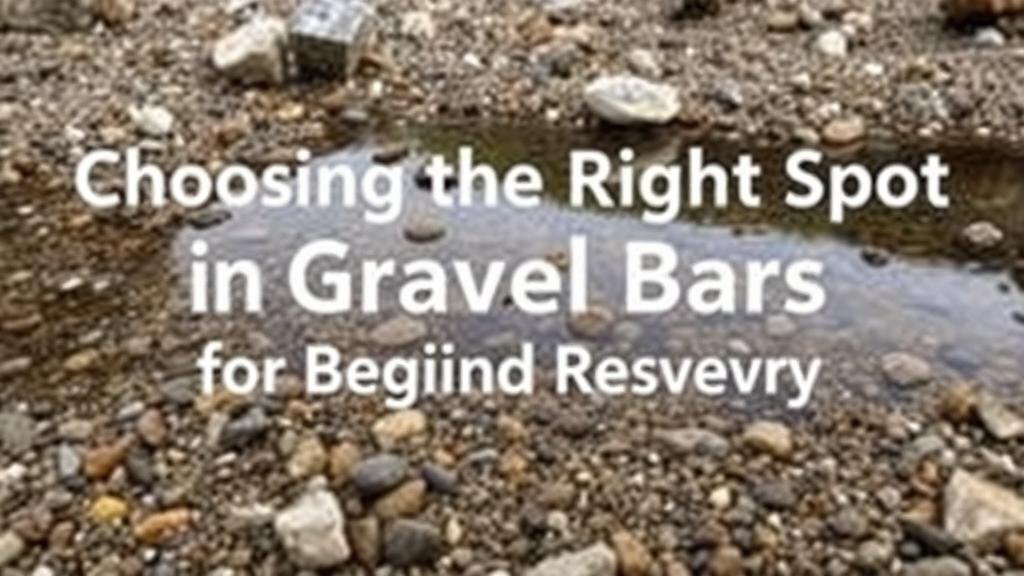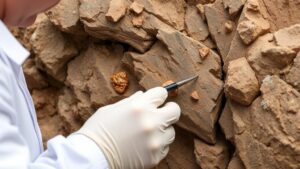Choosing the Right Spot in Gravel Bars for Beginner Gold Recovery
Choosing the Right Spot in Gravel Bars for Beginner Gold Recovery
Gold recovery is an exciting and potentially lucrative hobby that attracts many enthusiasts, especially those who enjoy outdoor adventures. One key aspect of successful gold panning is identifying the right spots in gravel bars. This article will guide beginners on how to effectively choose locations for gold recovery, focusing on essential techniques, observations, and examples.
Understanding Gravel Bars
Gravel bars are natural formations in rivers where sediment is deposited, often creating elevated areas composed of gravel, sand, and other materials. e formations are critical in gold recovery as they often trap heavier materials, including gold flakes and nuggets, during high water events.
Factors to Consider When Selecting a Spot
Several factors should influence your choice of location on a gravel bar. Understanding these factors can significantly impact your gold recovery success.
- Water Flow: Observe how the water flows around the gravel bar. Gold tends to settle on the downstream side where water turbulence decreases.
- Topography: Elevated areas or depressions can indicate where gold may accumulate. Pay attention to pockets or holes that may trap heavier materials.
- Location of the Bar: Bars closer to old riverbeds or upstream from known gold-bearing areas are more likely to contain gold.
Techniques for Analyzing Gravel Bars
When on-site at a gravel bar, specific techniques can aid in identifying promising spots for gold recovery.
- Wading Techniques: Walk through the water and observe how the current interacts with the gravel. Look for areas where smaller stones washed away, which might indicate the presence of heavier materials underneath.
- Using Tools: Tools such as metal detectors can be beneficial in pinpointing gold deposits. Digging tools can help access deeper sediment layers where gold may be lodged.
- Sampling: Collect small samples from various points on the gravel bar to assess which locations yield the best concentrations of gold.
Real-World Examples of Successful Gold Recovery
Many amateur prospectors have reported success in specific locations. For example, the famed American River in California has numerous gravel bars with historic gold discovery tales. Here, prospectors can often find gold by focusing on areas where smaller gravel meets larger boulders, as these are prime locations for the accumulation of gold deposits.
Common Mistakes to Avoid
Even seasoned prospectors can overlook simple details. Here are common pitfalls to avoid:
- Ignoring Local Regulations: Ensure you research local laws and regulations regarding gold panning. Many regions have specific guidelines or protected areas.
- Overlooking Seasonal Changes: Water flow can change throughout the year, affecting where gold settles. Always inspect your chosen spot during different seasons.
- Neglecting Safety Precautions: Approach rivers with caution. Be aware of currents and the potential for flash floods, especially during the rainy season.
Conclusion and Actionable Takeaways
Choosing the right spot in gravel bars for gold recovery is both an art and a science, requiring a keen understanding of the environment and diligent observation. By considering factors such as water flow, topography, and sampling from multiple locations, beginners can improve their chances of unearthing gold. Always remember to stay informed about local regulations and prioritize safety during your prospecting adventures.
Take these insights and head to your nearest river, keeping these principles in mind, and embark on a rewarding journey into the world of gold recovery.


